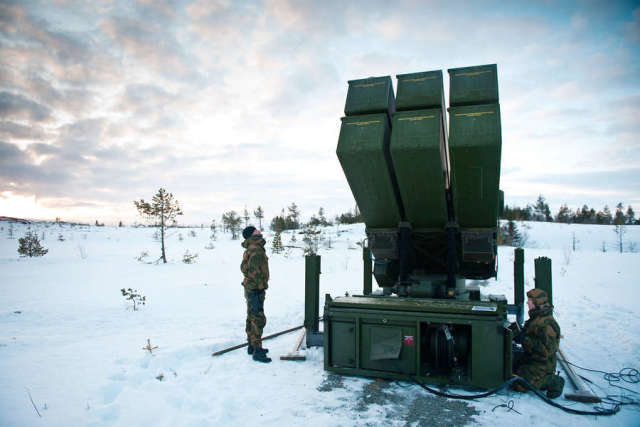Experts explained why the American HELWS laser will not be able to shoot down drones in combat conditions
The United States tested the High Energy Laser Weapon Systems (HELWS) system with a laser cannon, which was integrated into the Norwegian Advanced Surface to Air Missile System (NASAMS) anti-aircraft missile system. "Newspaper.Ru" was looking into how the US is doing with the development of laser weapons and what its main problem is.
During the tests, HELWS successfully hit two swarms of nine drones. The tests took place at the White Sands missile range in New Mexico.
The HELWS system has been developed by Raytheon since 2019 as part of the US Army program "Directed Energy Maneuver - Short-range Air Defense" (Directed Energy Maneuver-Short Range Air Defense, DE M-SHORAD).
It is noted that the military wants to get a system with a laser emitter and an electron-optical station. The prototype HELWS was built on the basis of the Polaris MRZR machine.
"It is unclear how much HELWS will actually work, because any laser installation spends a lot of energy. If the United States has the opportunity to provide power to these systems, it will make sense, especially for hitting some small fast-flying targets, because you can't get enough missiles at all, and the laser hits the target almost instantly. The USA has been testing laser systems for a long time. Objectively, HELWS is quite a promising story, but we need to solve the problem with energy supply," he told the newspaper.Ru" Dmitry Stefanovich, Researcher at the IMEMO RAS Center for International Security.
"One could say that the United States has found a new way to combat drones. The problem is that it does not work in real combat conditions. Huge energy resources are needed. Roughly speaking, one HELWS gun needs either a direct access to the power plant, or a train with batteries. This can be experienced. Or make two or three shots. But the installation has no mobility. Accordingly, the real combat capabilities are zero," Larin said.
According to a document of the US Congressional Research Service, which was published in September 2021, the Pentagon has been testing naval lasers for the second decade.
"In the period from 2009 to 2012, the Navy tested a prototype laser against unmanned aerial vehicles in a series of battles that initially took place on land and then on a ship. From 2010 to 2011, the Navy tested another prototype laser weapon. In August 2014, the Ponce amphibious assault ship was equipped with a laser installation," the document says.
The Ponce ship also tested a laser installation in the Persian Gulf in 2017, shooting down a specially launched drone. The report indicates that the Ponce ship remained in the Persian Gulf until it was replaced by the Navy expeditionary ship Lewis B. Puller in September 2017.
In May 2020, the US Navy ship Portland successfully conducted another test of laser weapons - this time in the Pacific Ocean. The footage and video posted by the Pentagon on Facebook (the company that owns Meta is recognized as an extremist organization) shows how a beam hits the unmanned vehicle from the deck of the ship, after which it begins to burn. The characteristics and power of the weapon were not reported.
At the same time, Murakhovsky noted that energy weapons are promising because the laser is able to work at the speed of light, but laser systems are quite capricious." "Laser installation requires requires a lot of auxiliary devices. The laser is also very sensitive to atmospheric parameters. Nebulae, snow, rain, even smoke. This problem has not been solved yet either," the expert noted.
Irina Alshayeva

